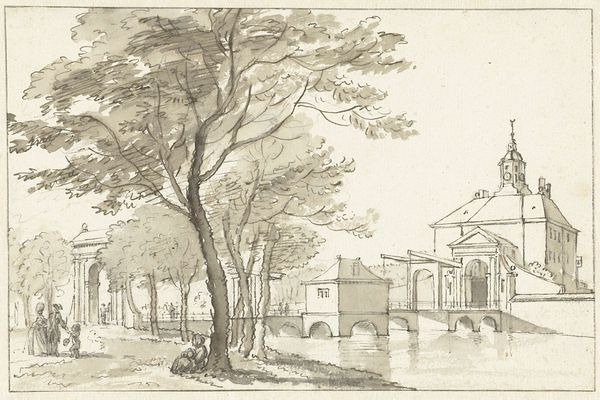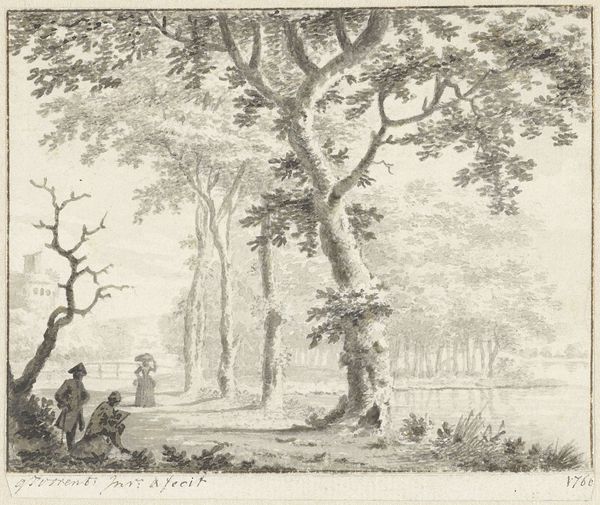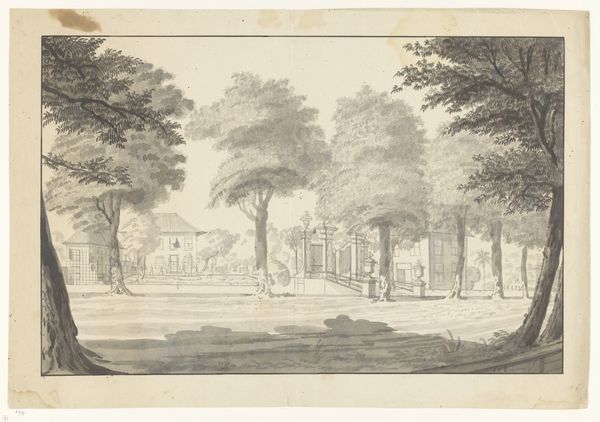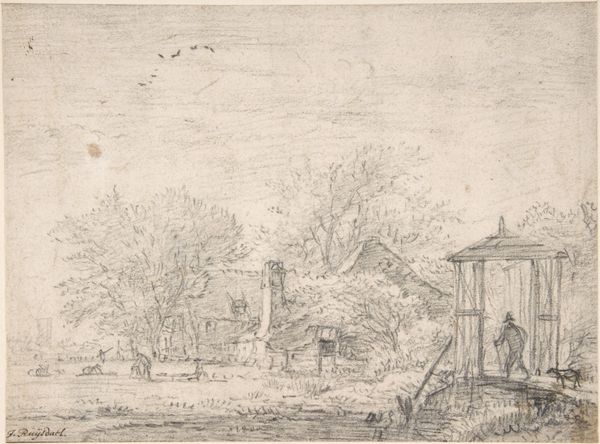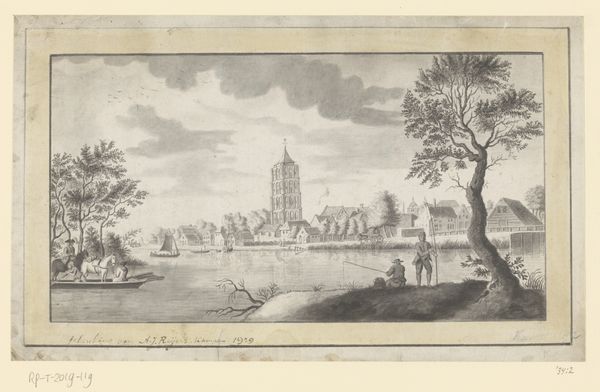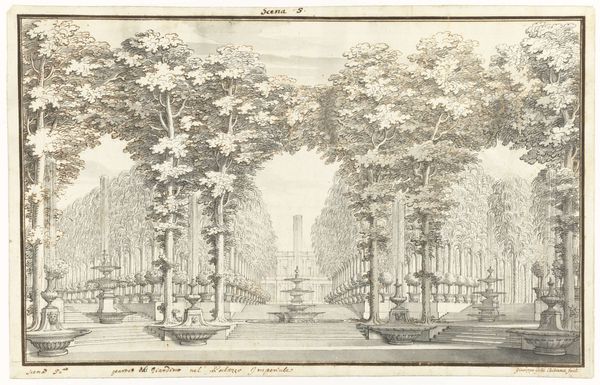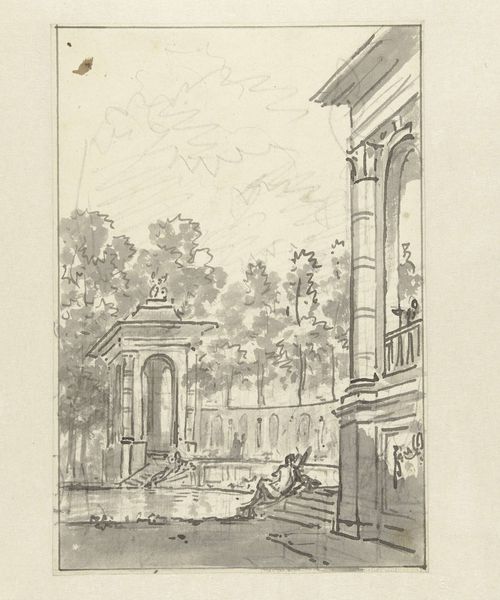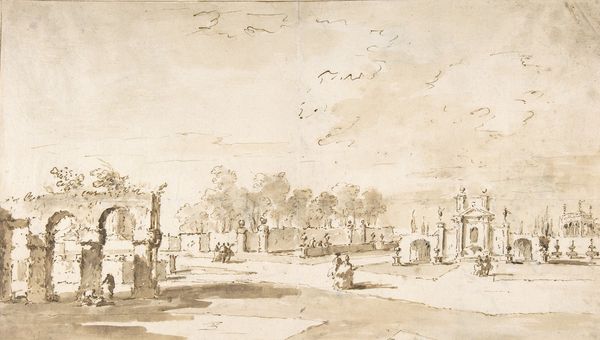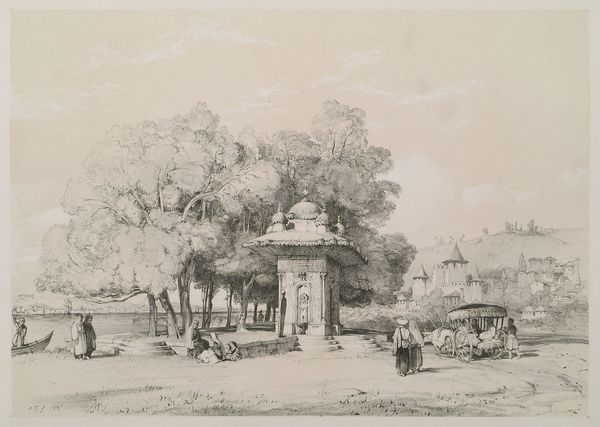
drawing, paper, ink
#
drawing
#
neoclassicism
#
landscape
#
paper
#
ink
#
cityscape
#
genre-painting
Dimensions: height 128 mm, width 198 mm
Copyright: Rijks Museum: Open Domain
Curator: Standing before us is Reinier Vinkeles’ “De Weesperpoort, Amsterdam,” an ink drawing on paper completed around 1768, depicting a cityscape. Editor: My immediate impression is one of tranquility—despite the suggestion of commerce via the distant figures, the work has this overwhelmingly serene feeling, a sort of calm watchfulness through its washed neutral tones and gently curving forms. Curator: Indeed. In many ways this serenity emanates from the artist’s rendering of nature and the neoclassical order of Amsterdam city architecture. There's a careful arrangement of organic forms that emphasizes depth and balance and implies a narrative. The city gate could easily stand in for a gate into another dimension, or act as an axis mundi. Editor: And considering Amsterdam's history of religious tolerance and trade during this period, the Weesperpoort as a symbolic representation is rich! This gate would have been a crucial intersection—a convergence point for the circulation of goods, people, and ideas within and beyond the city's limits. It really underscores the interdependencies fostered by Amsterdam's growth. Curator: And perhaps reflects Amsterdam as the New Jerusalem, the commercial capitol of the world where anything could be had or procured. This vista reminds me that city gates aren’t merely defensive structures, but points of exchange. In an image filled with calm reflection, this active crossing is barely present, yet critical. Editor: I am drawn to that, too. But more troubling for me is the underlying socioeconomic narrative in plain sight: you have commerce happening, you have people of means passing through gates...but what about those outside? I would be very interested to look closer at those two young people loitering at the fringe of the city, just outside the trees. Are they free, and safe? Curator: Yes! That’s where this artwork challenges us to consider the whole picture—the social realities obscured by the facade of the neoclassical order. It serves as a reminder of how civic symbols can perpetuate power imbalances. Editor: This is the precise duality of history painting that still grips me—both for its technical refinement and that unsettling feeling it stirs regarding history’s oversights. Curator: A very balanced assessment, emphasizing the nuanced intersection between visual pleasure, commerce and historical memory that Vinkeles successfully achieves here.
Comments
No comments
Be the first to comment and join the conversation on the ultimate creative platform.
